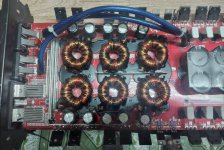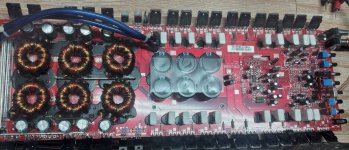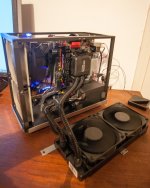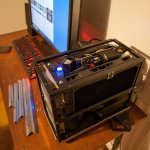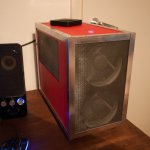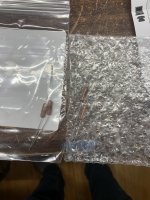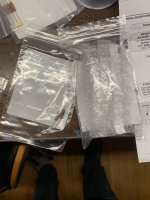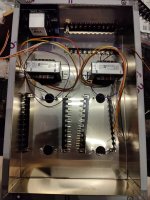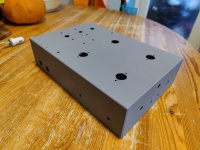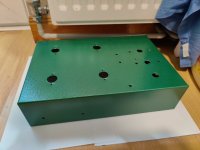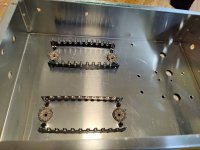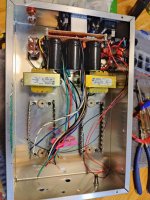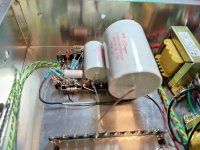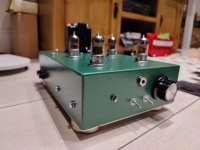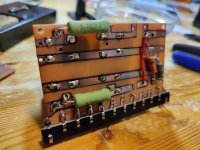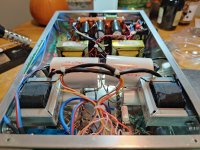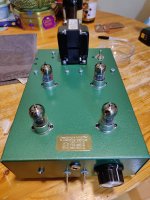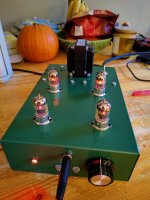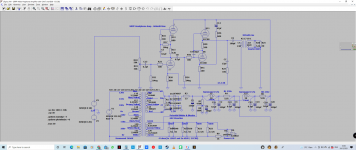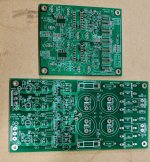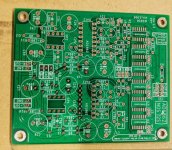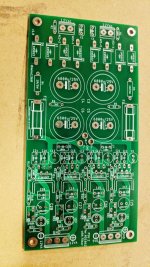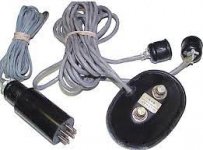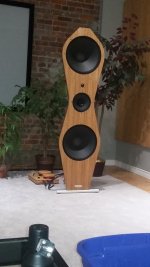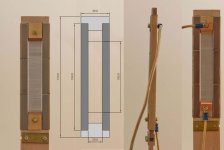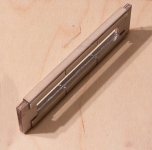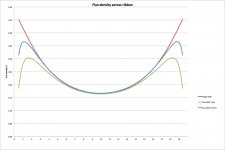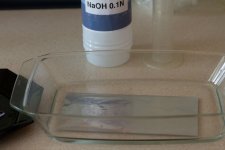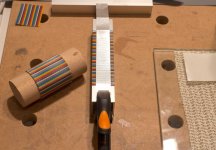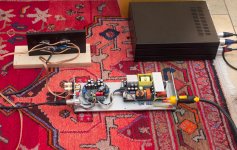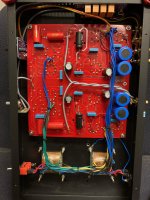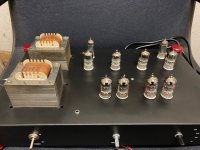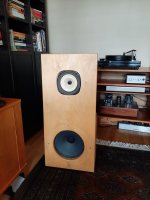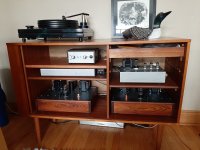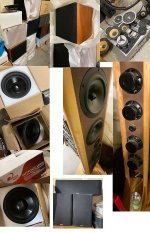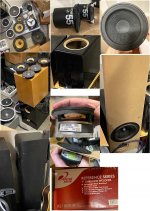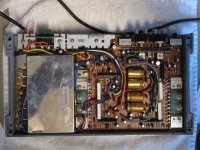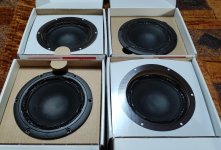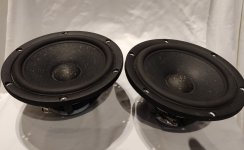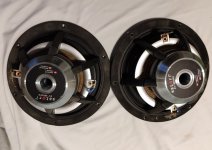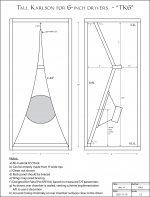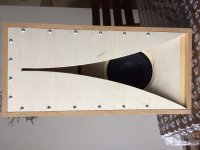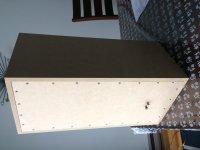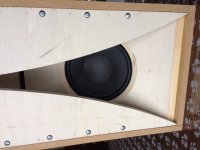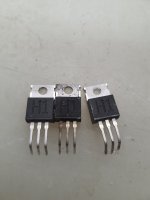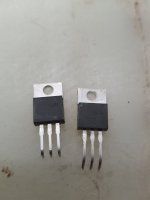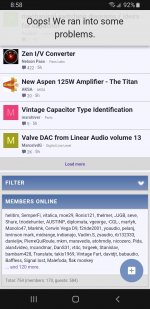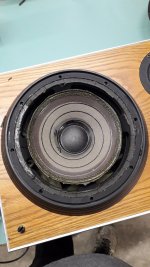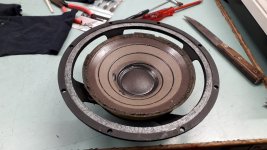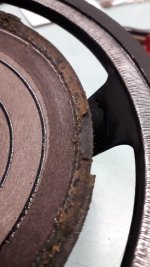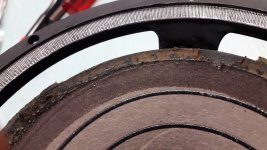While waiting on a delivery, for some entertainment value, I watched a slew of "experts" present their list of magical tweaks one can to to make their average music system the greatest ever. Done with a strait face, providing copious verbiage of soundstage, details, depth, life, and every term a thesaurus can provide. Most of these looked to be actual believers, not paid shills. Most seemed to not have paid attention to grammar school science class either. Concepts like AC seem to be totally amiss.
Anyway, it got me thinking. As DIY we want to tweak and do as well as we can. What kinds of things that don't violate the laws of physics and could be measured under laboratory conditions can we do? In no case do I suggest anything is audible or not. Just possible and with at least a thin grasp of reality. I try to suggest the actual parameter that the tweak could effect. A few of these fall under the old POOGE concept, which are internal tweaks. Several of these are only possibly relevant if poor design inside the box. Always think about any modification and if it is reversible. I know of an instance where someone potted a phono board to reduce micro-sonics, but the encapsulation caused it to overheat and fail.
Please, do not extend this to your favorite legless reptile extract claims. If one of those makes you happy, then I am happy for you.
I list tweak and possible effect. In no order than my pontificating. If you have some that fit to this list, please share them. If something in my list fails my criteria of possible, identify it.
Speaker position. We understand that one. Reflections within two feet have a significant effect on localization. On vs. off axis to the tweeter has a big eq effect and so on. Pointing in can reduce outside reflections. Or not.
Sound management. GOOGLE same and see what can be done with tips how to DIY. If it meets WAF, ( I guess we need a new term to be politically correct, "domestic distortion factor", DDF? ) great gains. Blew my mind after doing work in my last house HT the first time a sound came from left of the speakers. All hail Owens Corning 705. Management with intent and understanding, not blanket absorption.
Steel out of signal path. Fuse caps and holders, nuts on binding posts, cheap relays, chassis ground points. All can cause parasitic non-linear inductances.
Ferrites on line cords. Yes they can reduce RF. Can't do any harm. May reduce stray RF in proximity.
Twisted line cords. Most are already. Again can reduce stray fields.
Polarity of line. In the US with our polarized outlets it should not be a problem, but I have had older equipment without polarized plugs. This can cause hum in the system. If a US 3 prong, it may blow the breaker so you would know it.
Line/surge filter. More of a safety device. I have had proximity strikes take out electronics.
DC blocking filter. Big toroid's can get upset by DC and cause audible buzzing mechanically.
USB isolators If you have a lot of hash, and if the DAC is not well designed, and if USB powered, yes they filter noise and protect against transients. If your DAC is USB powered then a very clean external supply into a isolated hub can be cleaner.
Twisting speaker zip cord. It will reduce RF pickup so if your amplifier does not have a proper output network, it is possible to feed back into amp and cause instability. I actually had this happen. Bad amp design and an illegal 1000W CB transmitter.
Ferrite on speaker cord Same as above.
Pure tone sweeps of your listening room. Looking for things that resonate. I had a window spring and back of display case get excited. Some stands can be filled with sand as they may resonate.
Keep speakers from rocking I use a bit of rug anti-slip, but rubber feet or blu-tac work.
Quality of passive parts, particularly in crossovers Film rather than electrolytic caps, air core inductors. If in series with the woofer, wire gauge could actually effect the transfer curve. Non-inductive, non-steel resistors etc. ( funny, actual engineer with a strait face talking about coil resistance is series with a midrange, in series with a resistor!)
Low pass filter on the tweeter This may reduce artifacts that can excite breakup, mostly on metal or ceramic type tweeters.
Sub sonic filter on the sub Prevent excessive cone excursions below Fb.
High pass filter on the mains Prevent excessive excursion below Fb.
Redundant coupling caps. At your own risk, if you know for sure your preamp is AC coupled, then the input coupling cap of the amp is redundant. Evaluate your system as a system.
Too small a coupling cap. Many are picked only for the pole. Going much larger in an electrolytic can reduce distortion. Where maybe a 2.2u, use a 20. Self discussed this I believe. ( or I might use a 1u film)
Proper EQ in the room. This should be obvious. You can EQ your room, smooth the bass and solve any small speaker anomality, and get the top end rolled off enough for reality.
EQ per recording. Possible with great effort and big gains if you are a better mixing engineer and if an overall eq helps rather than the eq per track they did in the studio. Good luck. Some older "right and left" mixes, early 60's, can benefit for some top end mix like you may do for headphones.
Different EQ for every headphone. They are all different. Often quite a bit.
Clean connections Older equipment with tin plated RCAs, switch contacts, etc, a de-oxit I actually suggest dielectric grease on these locations to exclude oxygen and moisture. Actually some modern gold plated, the gold is so thin, the copper oxide can bleed through, so cleaning things up never hurts.
Clean the dust off your heat sinks. Kind of obvious isn't it?
Check for PS caps getting old. If you can hear hum right at your speakers, or even feel it on the cone, might consider if your big electro cans are getting old and dried out. Might consider replacing with a multi-cap array. Cheaper, usually longer lasting, lower ESR, and you may be able to fit considerably more capacitance. If you do, pay attention to the rectifier and inrush current. Many amps only have enough filtering to reduce noise, not to keep the rails up on transients. "Dynamic compression"
Clean you ears Yea, some actually get a build up and don't notice it. Your Dr. should notice it in your annual physical.
Noise from florescent or cheap LED lights. Both audible and RF.
Sound control in HVAC I hate flex duct as ductwork, but they don't transmit sound as much as hard duct.
Take all your audiophile magazines to the recycler. Don't pollute your mind with bogus wild paid advertising. I exclude things like Liner Audio as it is real engineers talking about real engineering. Voice Coil, ASE, Polish Institute etc. For what subscriptions to the slick page advertisements cost, you can go to the symphony many times.
Spurious sounds. I need to but some absorption material behind my all-in-one music server PC as in a quiet passage, I can hear the fan. When I ran a Behringer PA amp to my subs, I had to modify the cooling to eliminate the noise. Sit in your room and listen.
Correct length cables. No need for a 5 foot cable if units are 6 inches apart. When we can get just about as good as it gets from WorldsBest, or BlueJean for a few dollars, why not? If a cable is bad, then less of it is good.
Dress your cables But distance between power, speaker and interconnects. Cross at right angles. This reduces coupling.
Space between components. Especially if toroid transformers as their fields are usually vertical and can induce hum in a unit sitting on top. Also can help cooling. Go for several inches.
Go hear live music. Funny how we forget what instruments actually sound like. Have some fun. Take something that makes a nice sound. Big pot lid maybe, cymbal, strum a guitar. Set up your instrument mic and record it in the same position as one of your speakers. Then play it back. Listen to see how much work you may have to do! ( or not)
PS:
If your esoteric speaker cables, line cords, USB, and interconnects were made in England, send them to me and for only $1000 each, I will lay them before my Triumph Stag and perform the ritual to excise Lucas, Prince of darkness from them and return them in said pristine condition. The same ritual seems to work on Smiths as well. For an additional fee, I will put them in my pressure chamber and re-infuse them with magic smoke. Due to import and supply issues, bottles of magic smoke are in short supply so some delays are possible. I had a good supply collected from my MG, but used it all up. There may be services to excise the Italian, French and German electrical daemons, but I only deal in British. 🙂
